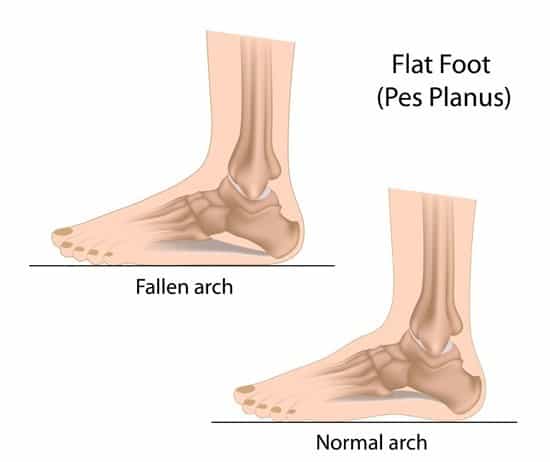Flat feet are a problem that’s more common among children and adults than you’d think. Although almost 30% of the world’s population suffers from flat feet, there is still so much mystery surrounding the condition. With the help of Dr. Muzamil Hussain, a general physician who did his house job in orthopaedics, we were able to answer all the questions you might have about flat feet. Scroll down to find out!

What Are Flat Feet? Are They Considered A Disability?
Flat feet, also known as fallen arches or pes planus, is an irregularity that has the entire sole of your foot touching the ground. “Flat feet are simply the loss of the longitudinal arch in feet”, explained Dr. Muzamil. To further answer whether or not flat feet is considered a disability, he added, “flat feet in most people is asymptomatic, hence, in this case it cannot be termed a disability. A disability is a condition which limits normal functioning of a human being. In some people it can cause pain with prolonged walking, weight bearing etc, and hence limits such activities and may be considered disabling here.” Interestingly, there are two types of flat feet: rigid flatfoot and flexible flatfoot. In the case of a rigid flatfoot, the feet do not form arches when a person is standing or sitting. If the foot arches when a person is resting (not walking or standing), he or she has flexible flat feet, which is the more harmless of the two.
How Can I Check If I Have Flat Feet?
Flat feet are easy to identify while standing or walking. You have flat feet if the arches on the inside of your feet are flattened; this would make the entire soles of your feet touch the floor when you stand up. You can also visually inspect your feet for the arch or getting them damp and stepping onto a dry, flat surface. If you see a full imprint of your entire foot, then you may have flat feet. However, it’s always best to consult a doctor and get your foot examined for an official diagnosis.
At What Age Can Flat Feet Be Diagnosed?
A baby’s feet will appear flat because arches have not developed yet. However, by the time a toddler is two or three years old, arches should develop or begin to develop. According to Dr. Muzamil, 4-6 year olds are at an appropriate age for diagnosis.

Can Flat Feet In Children Be Corrected?
Generally, doctors do not recommend treatment unless the foot is firm or painful. This is because uncovering the underlying cause is more important and managing the symptoms should be secondary. That said, exercises could help, as well as wearing shoes that give the feet sufficient support. Moreover, fallen arches can be observed in kids who have knocked knees or are overweight. Each of these influences can add to the symptoms of flatfoot and should be attended to.
How Can I Prevent Flat Feet From Happening?
According to Dr. Muzamil, different causes are at play in the causality of flat feet and not all are preventable. “Certain early developmental actions can help prevent this, like wearing sandals and slippers instead of tight-fitting shoes in early years. As well as using arches when you notice rigid flat feet and allowing kids to walk bare feet.”
How Does Running Affect Flat Feet?
Dr. Muzamil says that running is affected if you have rigid flat feet, but not in flexible flatfeet. Different types of footwear are available for flat feet people offering different angle arches. They are not scientifically proven to help, but a large number of people find them effective. Shoe insoles may also aid in comfort.
Do I Require Surgery If I Have Flat Feet?
“There is no need for any intervention if it’s asymptomatic. If symptomatic, depending on severity of symptoms, you may decide on interventions. Some people get permanent back pain, calf pain and foot pain. Patients with these symptoms are the ones who would qualify as candidates for surgery after failure of non-invasive therapies”, explained Dr. Muzamil. Stretching exercises, physical therapy and orthotic devices (shoe modifications, leg braces, casts, or supportive foot) can all aid in curing flat feet in cases where they are painful.










What do you think?
You must be logged in to post a comment.